Research Update
It has been a whirlwind week here at B518. We went out on a helicopter flight again today. This time we flew to the continent of Antarctica. Up until now we have been collecting samples around Ross Island, but today we went to Lake Frixell, which is in the Dry Valleys.
The Dry Valleys
The Dry Valleys are to the west of Ross Island, on the continent of Antarctica. They stand out on the map below, since they are not covered in ice. BV and F mark their location.

The Dry Valleys are the largest region without ice in Antarctica. As you may imagine, they are a desert biome with extremely cold temperatures and a dry climate. The dry conditions in the area are similar to Mars as well as an ancient Earth and scientists visit the area to better understand past changes in climate.
Lake Fryxell
Our team flew into Lake Fryxell (labeled F on the map above) to collect sediment samples. Lake Fryxell is located between the Canada GlacierA mass of ice that persists for many years and notably deforms and flows under the influence of gravity. and the Commonwealth GlacierA mass of ice that persists for many years and notably deforms and flows under the influence of gravity. at the bottom of the Taylor Valley. It is a facility zone, which means humans have been visiting the area to do research. Because humans have been here, we are collecting sediments to track the impact they have had on the land.

Lake Fryxell is 4.5 kilometers long and sits near the research camp. The lake is rising, so the camp will be moved to a higher location.
SamplingSampling refers to the process of selecting units or portions of a larger group that will be studied in order to answer questions about the larger group. The units can be people, water samples, ice cores, or any other appropriate object. Participants will explore the meaning of sampling and how it impacts experimental design and explore factors that define and limit sampling in the variety of projects visited during the expedition. They will consider how results from the chosen samples are used to describe the bigger target of a project's study. Time
Our team has become quite efficient at gathering sediment samples. Carl locates the sampling sites using a backpack with the GPSA Global Positioning System (GPS) is a satellite-based navigation system used to track the location or position of objects on the Earth’s surface.. Terry, Steve and I collect and record measurements at each sampling site and Andrew collects sediment samples.

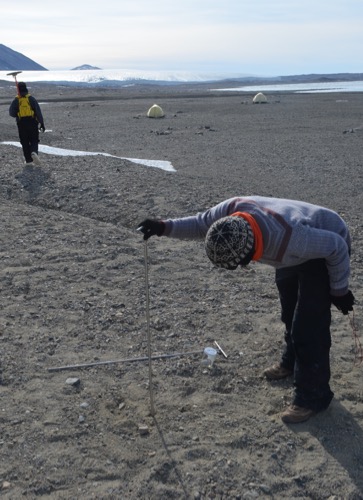
Time for a Hike
Since we collected our samples so quickly, we had time to hike around the area. Andrew and I hiked out to the Canada GlacierA mass of ice that persists for many years and notably deforms and flows under the influence of gravity..

First we hiked out onto the frozen lake. The ice on the lake was beautiful, but slippery!
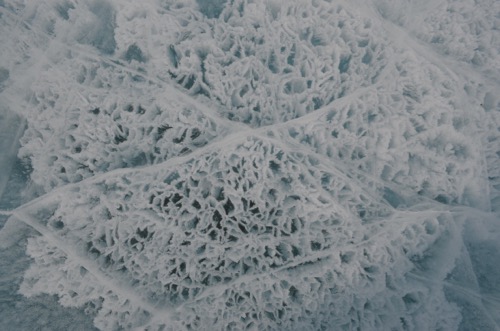
We discovered a narrow trail to hike on. It is important to stay off the soil and stay on the trails and ice in the area. This is because there are microorganisms living in the soil. Stepping on the soil could harm this delicate ecosystem.

Science on the Trail
While hiking, we came across a stream gauge. This stream gauge measures the stream stage (the water level of the stream) in 15 minute intervals. From this information, the discharge, or streamflow of the stream can be calculated using a mathematical relationship called a rating.
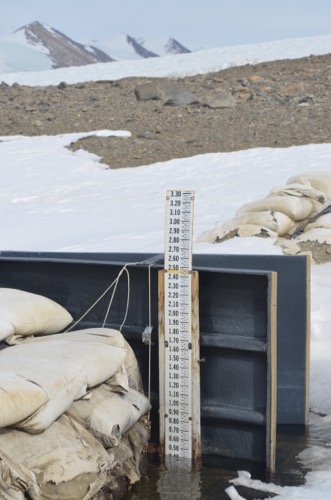
I could hear the water melting from the glacier and flowing downstream as we hiked. The melting water forms streams that head towards Lake Fryxell.
Up to the GlacierA mass of ice that persists for many years and notably deforms and flows under the influence of gravity.
After passing the stream gauge, I headed towards the glacier. It towered over me and I was amazed at how large the river of ice was.
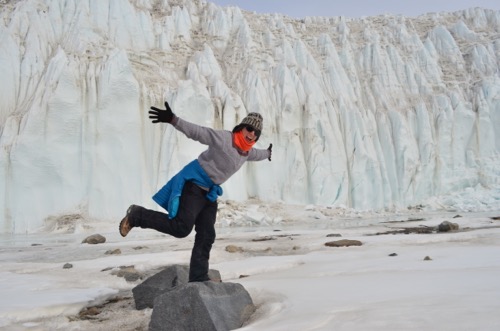
We hiked back to the Lake Fryxell shelter just in time to get on the helicopter back to McMurdo Station.
Meet Mikey!
While we were at Lake Fryxell, we ran into Mikey Johnson. I had met Mikey back in New Zealand when we were all flying to McMurdo Station together. He is a technician who helps conduct research on the streams here. Mikey and his team are part of the McMurdo Dry Valleys Long-Term Ecological Research program. Their team monitors streams over time to help better understand how they are changing.
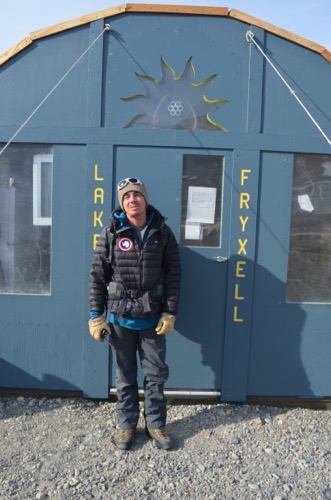
Life in Antarctica
Art is all around McMurdo Station, even hiding under bridges. This welded bridge troll is an example of the eccentric art at McMurdo Station.

Brought to you by...
Today's journal is brought to you by the Ms. Maroncelli's class at Nittany Valley Charter School in State College, PA.
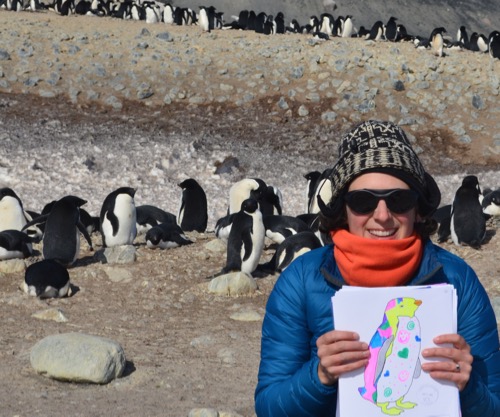

Comments